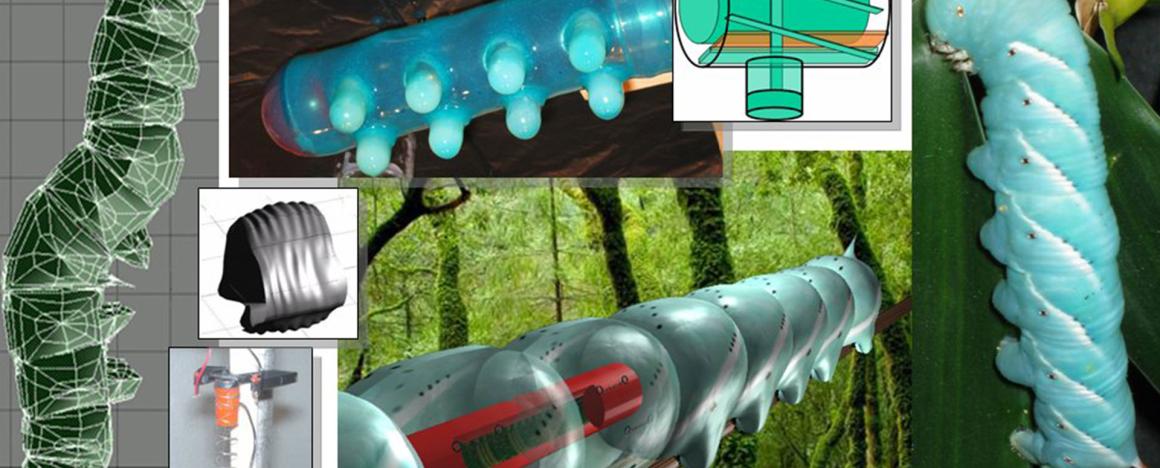About the Neuromechanics and Biomimetic Devices Lab

In the Tufts Neuromechanics and Biomimetic Devices Laboratory (BDL) we study how the tobacco hornworm caterpillar controls its complex movements and then we apply these findings to develop new approaches to robot control and design. We want to know how such a small nervous system coordinates more than 1000 muscles without using a stiff skeleton or joints. Animals must also sense and adapt to their environment so we also examine how a caterpillar "feels".
Dr. Trimmer is interested in the control of locomotion and the neural processes that organize sensory and motor information. He is the head of two integrated research labs — the Neuromechanics Laboratory uses an insect (the tobacco hornworm, Manduca sexta) as its primary model system because it has a brain with fewer neurons, many of which can be identified and kept alive outside the animal. The Biomimetic Devices Laboratory focuses on applying biological principles in the design, fabrication and control of new types of machines, including soft robots.
Currently we are pursuing three major projects:
- Neuromechanics of Locomotion
- SoftWorm Robots – a soft machine development platform
- Tissue Engineering of Novel Devices